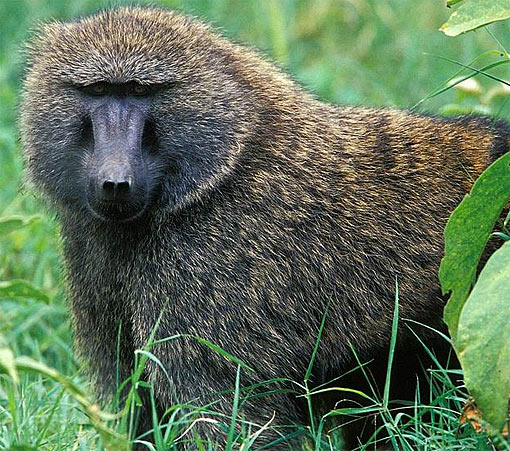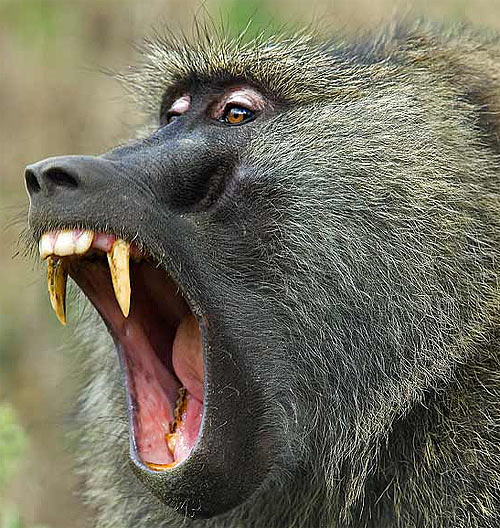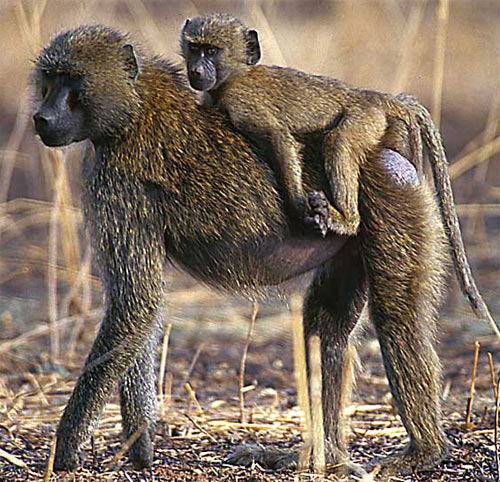Olive Baboon – Large, African Troop Primate

The olive baboon is a large, heavily built baboon that stands 3.25 ft (1 m) tall and can weigh as much as 53 lbs (24 kg). They have sloping backs and well developed musculature, especially in their muzzle, which is very canine-like, right down to their powerful teeth. Males are distinguished by their mane of long hair around their necks and larger shoulder widths. They also have tails with tufts at the end and naked (hairless) buttocks. They are known to live in troops of as little as twenty, to as many as 150, but from the smallest group, to the largest, they are always organized into a strict hierarchy. They live in a big swath of territory across the central African continent from East to West.

After waking up in their safe sleeping area of trees or high rocks, they will emerge and spend the rest of their time on the ground traveling to feeding sites in a strict procession which is very reminiscent of human tribal behavior. The young males will go ahead to scout for danger, and will also bring up the rear for protection. Leading the main marching group will be the older juvenile males, followed by the females and younger juveniles, then the older males with the mothers and infants, before the aforementioned rear protection group of young males.

Olive baboons are omnivorous, feeding on everything they can get their hands on. They eat grass, seeds, insects, invertebrates, bird’s eggs and young, lizards, and young mammals like antelope and lambs.

Olive baboons are also great communicators, using various vocalizations and facial expressions. All baboons, male and female, young and old, emit the “basic grunt” to get each others attention. Other grunts include the “roar grunt” and “cough-bark” (used to respond to unknown humans or low-flying birds). They also can “wa-hoo”, which is a call used in stressful situations (such as a troop member’s separation), or in response to other nearby troops during the night. There is also “broken grunting”, “pant grunts”, and “shrill barks”, which are all made during aggressive encounters. The most common facial expression is “lip smacking”, which is used in all sorts of social contexts.

With their complex communication skills, and clear social structure, olive baboons have a lot in common with primitive man.
